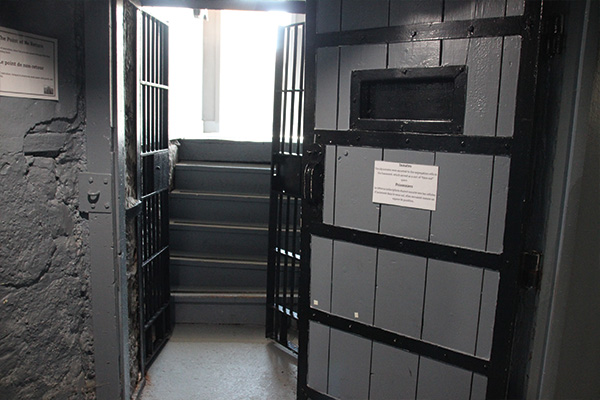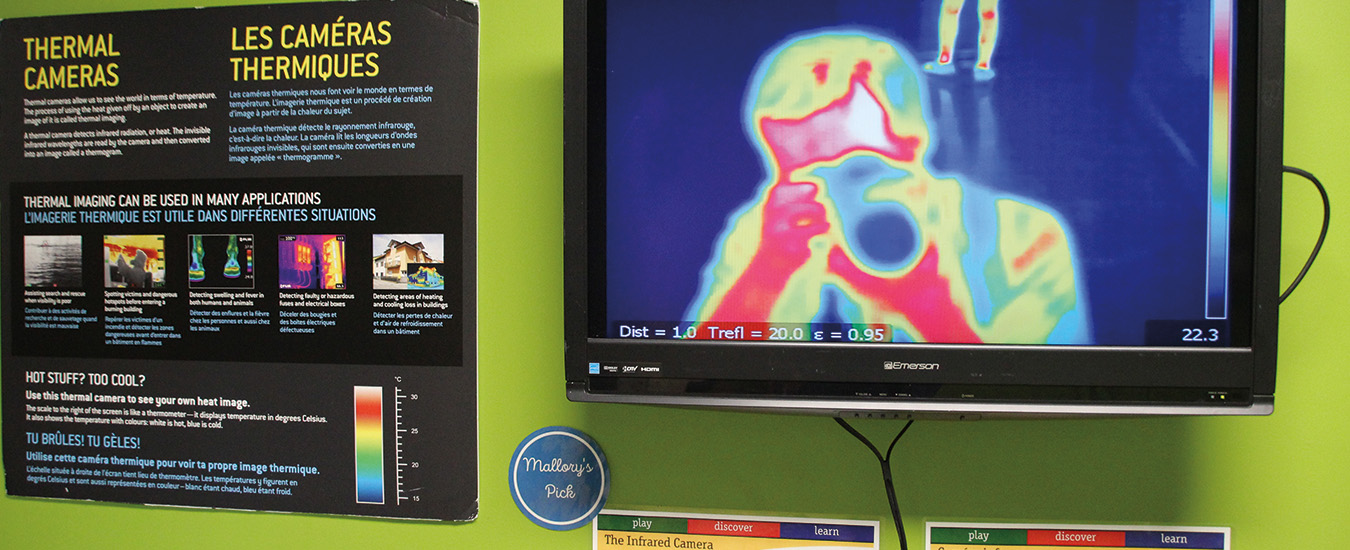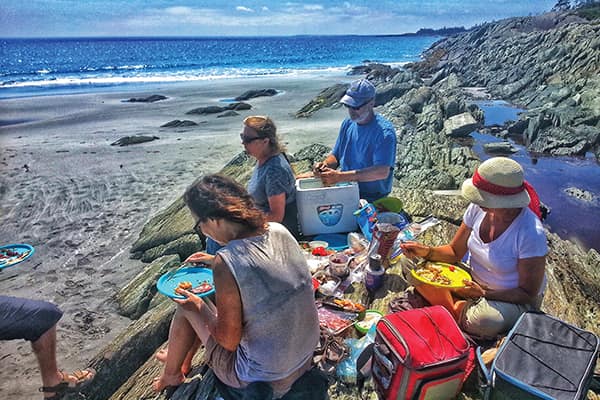Fredericton’s Science Centre is both educational and a little creepy
I’m standing in a space so tight, I can barely turn around, yet reflections of myself surround me. They recede into the distance. I ponder the illusion. How do a few mirrors in a circle create infinity?
Such are the mind-bending thoughts and questions that arise inside the Infinity Exhibit at Science East, Fredericton’s science centre. The exhibit is simple and effective. For spokesperson Lieff Salonius, it’s exactly the kind of exhibit that makes Science East stand out in a world of giant, flashy science centres. Even more remarkable is the building’s history as a jail.
“This is one of the more interesting examples of adaptive reuse in architecture in Canada,” says Salonius. “We are, as far as we know, the only science centre in the world in a former prison. The structure of the building binds itself into the design of our actual exhibits … Science centre exhibits are often massive things. They think bigger is better.”
Not at Science East. The outside walls are a metre thick and the inside partitions are almost 50 centimetres. Heavy, barred doors are still affixed to some of the doorways. The exhibition space is a series of small rooms, so Salonius and her colleagues have to be creative.
When it comes to customizing the kinds of exhibits normally found in science centres that help kids understand scientific concepts, designers at Science East discovered that, when it comes to kids, smaller is smarter. Downsized exhibits don’t overwhelm the little ones. Buttons and handles are in easy reach. While I had to squeeze into the Infinity Exhibit, kids pop in and out. There are 150 exhibits to explore in this relatively small building.

The Door of No Return in the basement.
Kids shoot lasers, fire air cannons at each other, see themselves in infrared, and leave their shadow behind. In keeping with the “smaller is smarter” approach, kids get super excited at the insectarium, where creepy crawlies like hissing cockroaches and giant stick bugs do their thing. Science East also finds ways to interpret big concepts with small exhibits: there’s a tabletop exhibit where kids can create an earthquake, a corner to make a mini tornado, and an exhibit explaining climate change.
Into the dungeon
The upper floors are only half the story. Downstairs in the basement, which staff nicknamed the Dungeon, notorious criminals
survived on bread and water, often in solitary confinement.
Built between 1840 and 1842, the York County Jail held convicts for more than a century, closing in 1996. Before electricity, this was indeed a cold, dark dungeon, relying on candlelight and a single fireplace. However, for much of its working history, the jailer and his family lived here, caring and cooking for prisoners.
As I tour the tiny, gloomy rooms, I hear surprisingly entertaining and educational stories. Salonius tells me about a prisoner who escaped every night to visit a girlfriend, then broke back into his cell before anyone noticed he was missing. In another anecdote, a couple of the most dangerous characters in the prison’s history were musicians, so the jailers bought them guitar strings and joined in singalongs.
One basement exhibit fills a prison cell. Here, kids and grownups learn about forensic sciences such as the use of DNA evidence in trials and convictions.
“It’s part of what makes the jail interesting,” says Salonius. “I think crime scene investigations and technologies are interesting to people because it’s a mystery. People love puzzles. We’re trying to reconstruct reality using science.”
The site’s criminal history adds a mysterious ambiance. Workers tell stories of strange energies, flashing lights, and unexplained sounds. It’s no wonder Salonius says the youngest kids are hesitant to descend, double daring each other down the stairs.
“It’s a bit of a rite of passage to come down here,” she says. “By the time they hit 10, they’re super curious, and they just run down. It’s nothing to them.”
For over 150 years, these thick walls and small rooms housed the convicted. Today, the building’s construction and history make for one of the world’s most unique science centres. When I ask about the jail’s future, Salonius gives a typically thought-provoking answer: “Who knows whether it will be the science centre forever? I will leave what it could be in 200 years to your imagination.”



